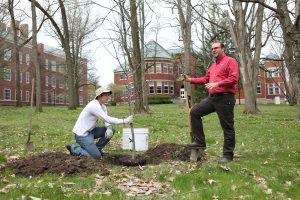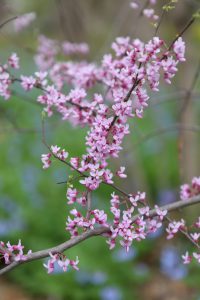
Tim Riley — Most people can dig a hole and cover up the roots. With a little water, the tree will grow into something to be proud of. Sounds easy? Well it’s not that simple. That maybe the most basic principles of tree planting, but there is a little more to it than that, that can save you money, years of headaches and disappointment.
Let’s start from the beginning. We are USDA planting zone 5a. This represents cold hardiness to -20 to -15. Read your plant tag or do research to select plants that are zone 5 or lower. Do not think that every plant they have in our local stores are hardy for your area. They are not! In my experience, most of the trees sold locally are of planting zone 5 or lower, but I would say 20% of the shrubs and perennial sold are zone 6. It may be possible to grow plants only cold hardy to zone 6, but they are rare and it’s truly a gamble with your time and money.
Know your soil. Is it black, rich with organic material, and well drained? If it is, you have won the lottery of soils and you can probably grow almost everything with ease. The reality is that most of us in west central Indiana are dealing with high clay content (the blond colored soils). Clay soils lack in nutrients, can hold too much or too little water, and hard to roots to grow into. Amending the soil with organic material may be necessary, but always mix it with the existing soil. My rule of thumb is one shovel of organic material to two shovels of native soil, mixed well. An example of trees that can’t tolerate heavy clay soils are Flowering Dogwood and Hemlocks.

Is where and how my tree grown in important? Yes it is. Trees that are locally grown are always going to do better because they are acclimated to the environment and soil type. Your local, privately own garden centers, are about the only place to find plants locally grown. Big box stores usually get their plants from large growers in distant states, like Oregon and Tennessee. Buying these trees from box stores are usually fine, but you have to be careful because they often come in leafed out too early and freezing temperatures can really cause harm. Trees are sold as B&B or in root pruning bags or plastic container form. Tree that are grown in natural soil and then balled and burlap (B&B) are the best for planting, due to natural spread of roots. A down fall to B&B is that they are usually heavy to handle. Root pruning bags are better, but not common in the stores. The bags allow the root grow up to the edge of the bags, then pinch if off so the root doesn’t turn causing girdling roots. Plastic container grown trees are common in box stores, and are at the highest risk of developing root problems in the future. The roots hit the side of the container, then turn and grow around the edge of the pot. This girdling of roots will choke a tree to death in a few years. Shrubs are usually not as big of an issue in plastic pots. You should always cut any girdling roots before planting tree or shrubs.
And finally, Plant your tree at the right depth. Planting too deep is such a common problem, and is likely to cause certain death. Most all trees have “root flares”. This the area right at the ground where the truck starts to angle out or flare out as it goes into the soil. Never plant the trees root flares below ground level. Tree Bark planted below ground will only rot and die if kept wet from soil or mulch. Sometimes you have to remove soil from the top to find the root flames, but I’ll be glad you did.
In conclusion, if you pick a tree that fits your locations light requirement, maturity size and follow the 4 steps above, you should be successful. Don’t forget to keep your tree watered the first two years after planting. Thank you for make the world a greener place.